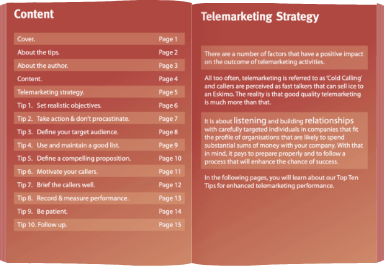What do you mean by ‘trigger’ I hear you ask? Well, a trigger, at least in my estimation, is anything that makes your prospect or customer get off the fence. It makes them sit up and take notice. It encourages them to act.
Buyers can be frustratingly slow. Decision-making can run at snail’s pace sometimes. Despite your best endeavours, they just won’t budge. Of course, there are plenty of reasons why they don’t buy. That’s aside any issues prospective buyers might have with those doing the selling.
Possible reasons for inertia include:
- Lack of budget
- The presence of equivalent products or services
- Timing
- Different priorities taking precedence
- Committee-based decision-making slowing the process down
- Lack of urgency or need
- The absence of risk or pain
The above is far from an exhaustive list of hurdles. But, it is illustrative of the reasons why your prospects may not engage and/or buy. It just isn’t important enough. So, what can you do to increase your chances?
Focus on Pain or Gain
Typically, if you think about it, we generally buy based on these two drivers. We either need to solve a problem or benefit from an opportunity. This is where understanding the nature of triggers comes in.
Sadly, too many sales people focus on what their company offers. You might think that statement is a bit odd perhaps. Yet, buyers simply don’t care about what you offer. They are only interested in what’s in front of them. They are preoccupied by matters at hand in their business. Those could be:
- Achieving sales targets
- Reducing wastage or risk
- Improving productivity
- Removing damages on a production line
- Upskilling their team to meet new demand
- Reducing staff attrition
- Meeting new industry guidelines
Once again, this is only a fraction of the things that your customers are concerned with on a daily/weekly basis. So, your communication is an interruption to what they’re doing whether that’s in the form of a call, an email, a LinkedIn message, an advertisement or a piece of content.
With that in mind, bland and uninteresting messages are likely to fall on deaf ears.
What Kind of Messages are Best?
As explained earlier, if you can tap into things that benefit the customer through either taking away issues that they have or presenting opportunities for them, you are onto a winner.
But, what triggers might do that in your business? Often, you need to look externally, not internally, to find the answer. What’s going on in your industry? More importantly, what’s happening in your clients’ world? Examples of triggers might be the following:
- Legislative drivers – e.g. GDPR, or new laws relevant to their sector
- Industry drivers – e.g. KYC in financial services or new food standards
- Financial or economic drivers – e.g. the forthcoming plastic packaging tax
- Environmental drives – e.g. sustainability, emissions etc
- Technology drivers – to save money or improve productivity e.g. electric cars
Of course, there will be many others. There will likely be quite a few industry drivers that impact directly on your clients. That’s aside from factors that influence decisions in particular sectors.
For example, in the past, we worked for a secondary packaging company that provided stability wrap for fragile goods in transit that reduced damages and cut packaging costs all while helping the environment.
We have also worked for a provider of legal tech for law firms that increased access to litigation funding, something that is extremely pertinent for this audience.
Not Everything is Unique
Not every business has a shiny new solution with which to go to market. Where that’s the case, it’s about thinking about your clients’ needs and positioning what you do to cater for those in a way that’s different to your competitors. That’s not easy. It’s hard to differentiate. Part of that differentiation though is how you come across. It’s how your messages fit with client needs.
Too often, sales messages are bland and the same as every other provider of similar products and services. Therefore, consider how you can position your offering in a way that makes sense to the prospective buyer. It may be that change cycles and renewal dates are long. That’s a fact of business life in some industries. But, it’s certain that you won’t gain traction by looking and sounding the same as everyone else including the incumbent supplier.
That means finding a way to differentiate your business in emails, in LinkedIn messaging, in blogs and videos, on the phone and elsewhere. Try to tap into the buyer’s psyche. What makes them tick? What keeps them awake. What stresses them out? Can you shape your solutions to fit?
Research the Hot Buttons
If it isn’t obvious, such as the current groundswell of opinion to save the planet, or the need for face masks and sanitiser, do your research. That could simply be by asking a section of clients about what challenges they’re facing. It could be via a formal research study. Or, it could be through industry research or investigating how forthcoming legislation or industry changes might affect certain businesses.
Ultimately, at least in our opinion, pain is stronger than gain. If your buyer is likely to get it in the neck if something goes seriously wrong, that’s a much stronger imperative than the possibility of improving something that is working perfectly well right now. You may have the best widget in the world, but if the buyer already has a widget that does a decent job and he or she has other priorities, it will be harder to get them to budge.
What if you Can’t Find a Trigger?
It isn’t always easy or obvious. Despite the fact that there’s stuff going on in most businesses and industries all the time, identifying triggers isn’t always easy. Clearly, if there aren’t drivers for action, change will be less frequent and stimulating that shift is likely to be more costly. That’s because you may need more activity in terms of marketing to generate relevant opportunities.
As mentioned earlier, in this case, you need to be clever. You need to think about your messaging. That includes your people. Your people are your business. They are your brand. Whether that’s on an exhibition stand, presenting at a webinar, at prospect meetings or on the phone, how they engage with customers will make the difference.
Turn Your Approach on It’s Head
A consultative approach in B2B marketing is rarely wasted even if clients aren’t ready to buy. Understanding buyer challenges and relating to those is best practice. Demonstrating understanding and empathy is essential. Overt pitching rarely works. Talking about what you do isn’t the way to do it. It is much better to ask good questions and listen before responding and tailor your response to buyer challenges.
Every sale is triggered by a need. Some are routine purchases for commoditised products and services. Some are simply replacement purchases from entrenched suppliers. That isn’t what we’re really talking about here. We’re also not really talking about situations when incumbent suppliers screw up. That’s definitely a trigger. However, it’s almost impossible to isolate when that situation occurs. You just have to hope that your business is visible at the point when that buyer is in the market. Regular communication with the right profile of target customers is important.
However, there’s no doubt that the more compelling the trigger for change that you can identify, to which you can attach your services, the more likely you will put yourself in with a chance of converting more business.






